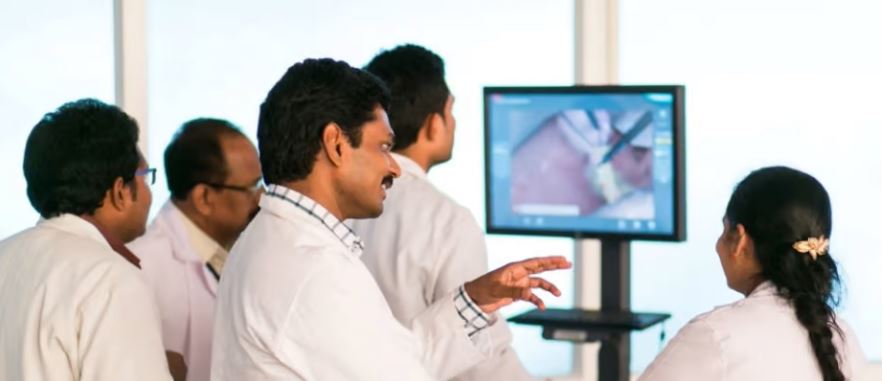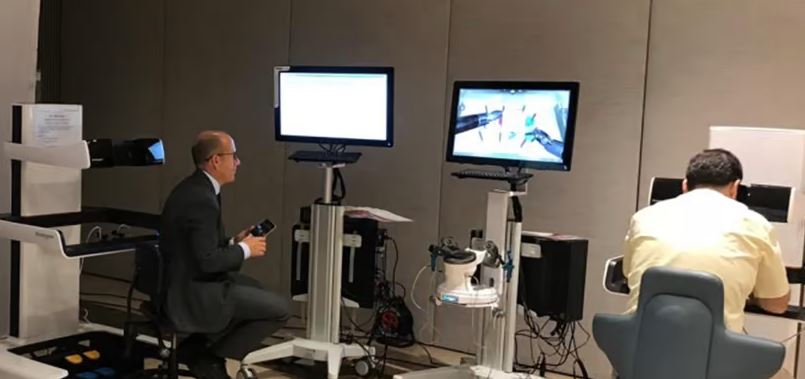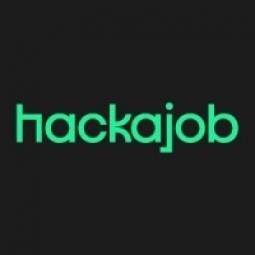Applicable Industries
- Education
Applicable Functions
- Procurement
- Quality Assurance
Use Cases
- Time Sensitive Networking
Services
- Testing & Certification
About The Customer
The Access Group is a leading provider of industry-specific software solutions, including education, not-for-profit, health and social care, finance, legal and HR. They aim to streamline everyday processes for medium-sized UK and Asian Pacific organisations. Over the past decade, The Access Group has experienced significant growth as they continuously evolve their product offering to design intuitive solutions that change the way people work. However, like many organisations in the IT services and consulting industry, they faced challenges in hiring quality tech talent, especially during the pandemic.
The Challenge
The Access Group, a leading provider of industry-specific software solutions, faced significant challenges in hiring quality software engineers with relevant experience. The company's small in-house tech recruitment team was spending a considerable amount of time reaching out to and qualifying passive talent, many of whom did not possess the necessary technical expertise or had mismatched salary expectations. Additionally, the candidates' knowledge about The Access Group was often minimal, requiring additional time to drive engagement towards the company’s product offering and company culture. The team was also managing an increased number of software developer and quality assurance vacancies due to company growth. In a market where the average cost per tech hire can be as high as £15,000 via external sources, they were in search of a solution that would provide a positive return on investment without adding extra burden on their day-to-day operations.
The Solution
The Access Group turned to hackajob, a platform that allowed them to engage with pre-vetted, active tech talent that matched their vacancies based on salary expectations and technical skill-set. After successfully hiring three software developers during a 30-day trial, hackajob became a part of the recruitment team’s daily workflow. The team found they were having increasing numbers of valuable conversations with candidates who had already accepted their invitation to interview and had some prior knowledge of the company. This solution freed up their time, allowing them to focus on other responsibilities such as improving and streamlining their interview process. The reduced sourcing time resulted in the Access Group being able to progress candidates through their interview process more quickly and efficiently than before. A lower time to hire also contributed to increased interview engagement, with fewer candidates choosing to progress forward with other employers.
Operational Impact
Quantitative Benefit

Case Study missing?
Start adding your own!
Register with your work email and create a new case study profile for your business.
Related Case Studies.

Case Study
Revolutionizing Medical Training in India: GSL Smart Lab and the LAP Mentor
The GSL SMART Lab, a collective effort of the GSL College of Medicine and the GSL College of Nursing and Health Science, was facing a challenge in providing superior training to healthcare professionals. As clinical medicine was becoming more focused on patient safety and quality of care, the need for medical simulation to bridge the educational gap between the classroom and the clinical environment was becoming increasingly apparent. Dr. Sandeep Ganni, the director of the GSL SMART Lab, envisioned a world-class surgical and medical training center where physicians and healthcare professionals could learn skills through simulation training. He was looking for different simulators for different specialties to provide both basic and advanced simulation training. For laparoscopic surgery, he was interested in a high fidelity simulator that could provide basic surgical and suturing skills training for international accreditation as well as specific hands-on training in complex laparoscopic procedures for practicing physicians in India.

Case Study
IoT platform Enables Safety Solutions for U.S. School Districts
Designed to alert drivers when schoolchildren are present, especially in low-visibility conditions, school-zone flasher signals are typically updated manually at each school. The switching is based on the school calendar and manually changed when an unexpected early dismissal occurs, as in the case of a weather-event altering the normal schedule. The process to reprogram the flashers requires a significant effort by school district personnel to implement due to the large number of warning flashers installed across an entire school district.

Case Study
Implementing Robotic Surgery Training Simulator for Enhanced Surgical Proficiency
Fundacio Puigvert, a leading European medical center specializing in Urology, Nephrology, and Andrology, faced a significant challenge in training its surgical residents. The institution recognized the need for a more standardized and comprehensive training curriculum, particularly in the area of robotic surgery. The challenge was underscored by two independent studies showing that less than 5% of residents in Italian and German residency programs could perform major or complex procedures by the end of their residency. The institution sought to establish a virtual reality simulation lab that would include endourological, laparoscopic, and robotic platforms. However, they needed a simulator that could replicate both the hardware and software of the robotic Da Vinci console used in the operating room, without being connected to the actual physical console. They also required a system that could provide both basic and advanced simulation training, and a metrics system to assess the proficiency of the trainees before they performed surgical procedures in the operating theater.

Case Study
Edinburgh Napier University streamlines long-distance learning with Cisco WebEX
• Geographically dispersed campus made in-person meetings costly and inconvenient.• Distance-learning programs in Malaysia, India, and China required dependable, user-friendly online tools to maximize interaction in collaborative workspaces.• Virtual learning environment required a separate sign-in process, resulting in a significant administrative burden for IT staff and limited adoption of collaboration technology.

Case Study
8x increased productivity with VKS
Before VKS, a teacher would spend a lot of time showing a group of 22 students how to build a set of stairs within a semester of 120 hours. Along with not leaving the teacher much time to provide one-on-one support for each student to properly learn carpentry, it also left a considerable amount of room for error. Key information would be misinterpreted or lost as the class was taught in the typical show-and-tell way.

Case Study
Scalable IoT Empowering GreenFlex's Sustainable Growth
GreenFlex, a company that supports sustainable development, decarbonization, and energy efficiency, faced several challenges in its quest to expand its business. The company needed to deploy a robust and sustainable IoT technology to support its growth. It was crucial for them to monitor and control devices at customer sites in a safe and reliable manner. They also needed to integrate devices across a range of communication protocols and gather and act on data to meet efficiency targets. GreenFlex had previously built IoT capabilities into its digital platform, GreenFlexIQ, to monitor and manage customer sites remotely. However, they soon realized that they needed a new platform to support their ambitions. They needed a platform that could scale to connect more devices for production management and make it easier for the operations team to manage devices in the field.







